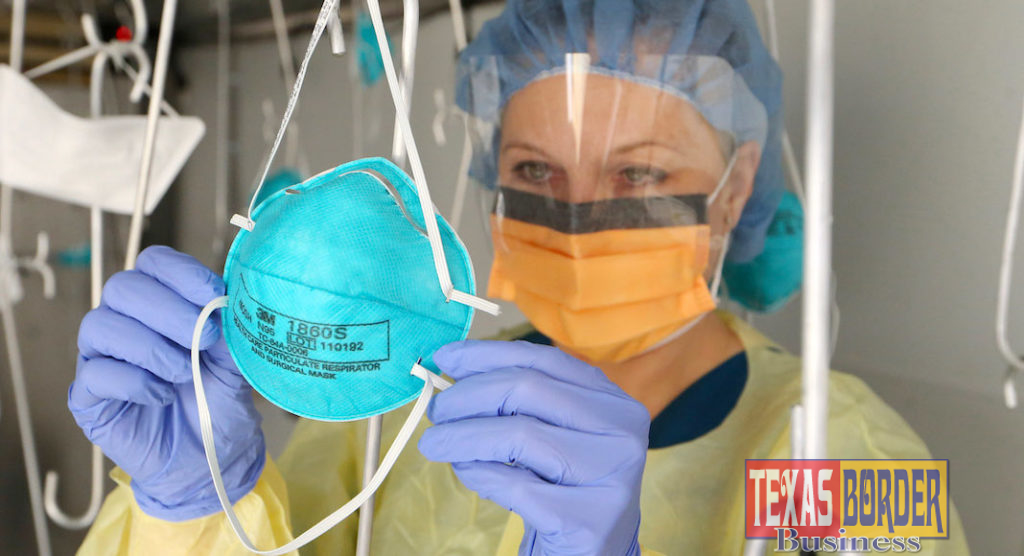Weather and its potential impact on how COVID-19 behaves has remained a consistent focus since the outbreak erupted.

Texas Border Business
AccuWeather Global Weather Center – The shortage of personal protective equipment (PPE) during the coronavirus pandemic has led a team at Nebraska Medicine to develop a process that allows for decontamination and reuse of vital N95 filtering facepiece respirators (FFR).
The procedure involves delivering high doses of “ultraviolet germicidal irradiation” (UVGI) to the used FFRs.
“The UVGI exposure we have chosen exceeds, by at least several folds, the amount of exposure needed to inactivate SARS-CoV-2 and provides a wide margin of safety for surface decontamination,” the team’s report noted, referring to the virus that causes COVID-19.
When worn properly, FFRs are designed to protect the wearer (the healthcare worker, for example) by removing at least 95 percent of particles from inhaled air, according to the Centers for Disease Control and Prevention (CDC). An FFR should seal to the wearer’s face, without allowing air leaks to pass through gaps between the respirator and the wearer’s skin. Surgical masks, on the other hand, are not specifically designed to protect the wearer from airborne hazards. These devices limit the spread of infectious particles expelled by the wearer.
Nebraska Medicine plans to decontaminate and reuse the N95 FFRs “multiple times until respirator fit is impacted….,” the report notes. “Our program initially involved the units with high N95 FFR use, such as the emergency department and our COVID-19 ward, but we plan to rapidly expand to ambulatory settings.”
N95 masks are also being reused at Saint Louis University Hospital in St. Louis. After UV light exposure for 10 minutes, the masks are able to be utilized for up to five additional shifts. The team is able to sanitize up to 1,600 N95 masks per day.
“We believe a variety of UV light sources could be used in a similar fashion, including UV-equipped biosafety or sterilization cabinets or other UV disinfection systems and that this method can be applied to a variety of other critical items, such as procedure masks,” the Nebraska Medicine report noted.












